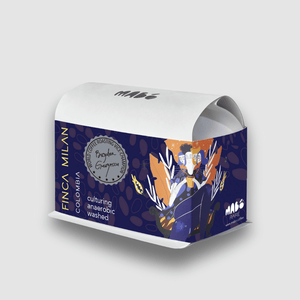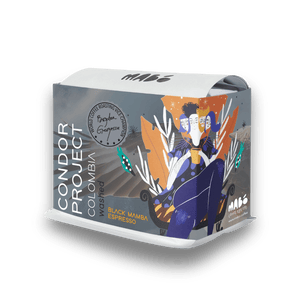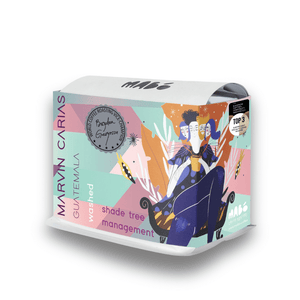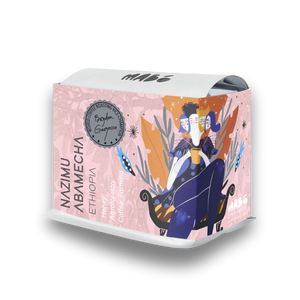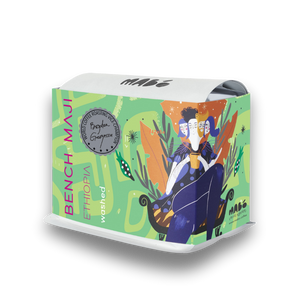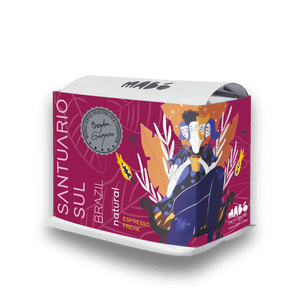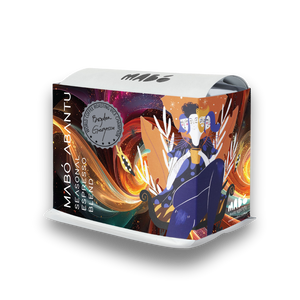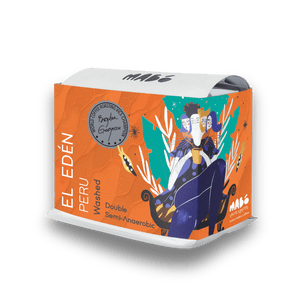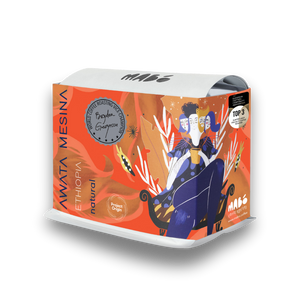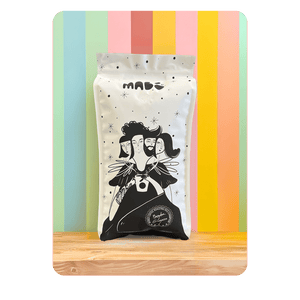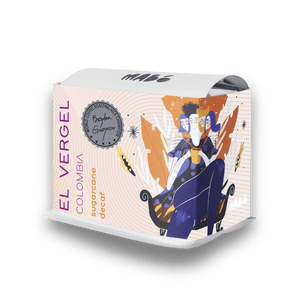
BRUNCA MARESPI, Costa Rica (White Honey) Specialty Coffee
Tasting notes
Loyalty points
What else are we putting in the basket today?
| Origine | Costa Rica |
| Regiune | Brunca, Chirripó Mountain |
| Fermă | Beneficio Marespi SA |
| Producător | Rafael Lorenzo Marin Zuniga |
| Fermentare | White Honey |
| Altitudine | 1600 – 1850m |
| Profil de prăjire | [] |
| Perioadă de odihnă | Filter 7 days | Espresso 14 days |
Open for more details
Being the third generation in the cultivation and production of coffee, Mr. Rafael Lorenzo Marin Zuñiga, together with his wife, Silvia Elena Espinoza, founded a 100-hectare property for coffee production. One of his 11 children, Angel Marin Espinoza, took the initiative to found the Marespi mill in 2006, to improve income for coffee producers. In 2021, Marespi carried out the first direct export of premium quality green coffee from San Carlos to the world. In 2022, Marespi was one of the most consolidated coffee industries in the Brunca region - Costa Rica. For us, this is the second consecutive year that we use coffee from this producer and we feel an increase in quality from year to year.
White Honey Fermentation
The relatively recent emergence of a processing style known as honey has become prominent in Central American coffee-producing countries, perhaps most notably in Costa Rica. This process preserves some of the desirable characteristics of a fully naturally fermented coffee (strong body, fruity sweetness with low acidity, deep chocolate notes) while greatly speeding up the drying process and reducing some of the risks of spoilage, mold, and other defects that can occur with a fully intact coffee cherry on the terraces or drying tables.
The most obvious benefit of the Honey process over strict naturals is the speed and efficiency of the drying process, as well as the various flavor characteristics that can emerge through fermentation and exposure. On the other hand, exposed fruit material creates more risk for producers, as it requires more work in drying to prevent defects from occurring. These coffees will also often have an uneven or inconsistent appearance in green form, which can be unappealing to roasters accustomed to the more uniform cleanliness of a washed coffee.
Caturra/Catuaí Arabica variety
Caturra is a natural mutation of the Bourbon variety. It was discovered on a plantation in the state of Minas Gerais, Brazil, sometime between 1915 and 1918. Caturra has a mutation in a single gene that causes the plant to grow smaller (called dwarfism/compactism). Its name derives from the Guarani word for "small". It is also called "Nanico". After the discovery of Caturra, selections were made by the Agronomic Institute (IAC) of the state of São Paulo in Campinas, Brazil, starting in 1937.
Catuaí is a hybrid between the highly productive Mundo Novo and the compact Caturra, developed by the Agronomic Institute (IAC) of the State of São Paulo in Campinas, Brazil. The plant is highly productive compared to Bourbon, partly due to its small size, which allows plants to be planted much closer together, almost double the density. The shape of the plant makes it relatively easy to apply treatments against pests and diseases. It is mainly characterized by its high vigor and its reduced height; it is less compact than Caturra. It is very susceptible to coffee leaf rust. Catuaí derives from the Guarani word "multo mom", which means "very good".


